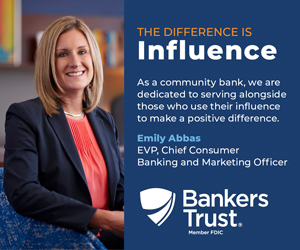Will Iowa banks take part in Treasury’s new deal?

.floatimg-left-hort { float:left; } .floatimg-left-caption-hort { float:left; margin-bottom:10px; width:300px; margin-right:10px; clear:left;} .floatimg-left-vert { float:left; margin-top:10px; margin-right:15px; width:200px;} .floatimg-left-caption-vert { float:left; margin-right:10px; margin-bottom:10px; font-size: 12px; width:200px;} .floatimg-right-hort { float:right; margin-top:10px; margin-left:10px; margin-bottom:10px; width: 300px;} .floatimg-right-caption-hort { float:left; margin-right:10px; margin-bottom:10px; width: 300px; font-size: 12px; } .floatimg-right-vert { float:right; margin-top:10px; margin-left:10px; margin-bottom:10px; width: 200px;} .floatimg-right-caption-vert { float:left; margin-right:10px; margin-bottom:10px; width: 200px; font-size: 12px; } .floatimgright-sidebar { float:right; margin-top:10px; margin-left:10px; margin-bottom:10px; width: 200px; border-top-style: double; border-top-color: black; border-bottom-style: double; border-bottom-color: black;} .floatimgright-sidebar p { line-height: 115%; text-indent: 10px; } .floatimgright-sidebar h4 { font-variant:small-caps; } .pullquote { float:right; margin-top:10px; margin-left:10px; margin-bottom:10px; width: 150px; background: url(http://www.dmbusinessdaily.com/DAILY/editorial/extras/closequote.gif) no-repeat bottom right !important ; line-height: 150%; font-size: 125%; border-top: 1px solid; border-bottom: 1px solid;} .floatvidleft { float:left; margin-bottom:10px; width:325px; margin-right:10px; clear:left;} .floatvidright { float:right; margin-bottom:10px; width:325px; margin-right:10px; clear:left;}
The term “economic uncertainty” has a dual meaning for most Iowa bankers, as they await details that will help them decide whether they should apply for the U.S. Treasury Department’s Capital Purchase Program.
Under that program, announced Oct. 14 by Treasury Secretary Henry Paulson, financial institutions can apply for a portion of $250 billion the government wants to invest in banks by purchasing stock issued by those institutions. The move is part of a broad effort by the government to increase confidence and enhance liquidity in the credit markets.
As Treasury officials ponder whether to expand the capital-injection program to other types of financial institutions, such as insurance companies and corporate finance units, the majority of Iowa banks are still in the dark as to how the program may apply to them.
“We’d like to participate in it,” said Russ Olson, president and CEO of Liberty Banshares Inc., the West Des Moines-based parent company of Liberty Bank. Olson said the program’s 5 percent interest rate is an appealing cost of capital for his bank, and likely will attract other banks to consider the program. “But because we’re a private bank and a subchapter S bank, we’re not in the ballgame.”
Banks that are organized as subchapter S corporations for income tax purposes are restricted from having more than one type of shares outstanding. Under the Treasury Department program, participating banks would be required to issue warrants for the department to purchase common stock in the institution.
Extended deadline
Treasury officials have said additional rules to expand the program to private and subchapter S banks are forthcoming. It initially appeared that a Nov. 14 application deadline applied to private banks as well as publicly traded banks, but now it has become clear that the deadline applies only to publicly traded banks.
“We were actually calling for an extension of the deadline, because there were a number of issues to be resolved,” said John Sorensen, president and CEO of the Iowa Bankers Association. “It really left most banks in Iowa in a difficult position; not only working through the potential stigma of participating in the program, but also dealing with the difficulty of establishing a different tier of stock ownership, particularly if you are a subchapter S corporation.”
A piece of the $700 billion financial rescue package approved by Congress in September, the Troubled Assets Relief Program (TARP), initially sought to purchase nonperforming mortgage loans and other securities held by banks. However, it quickly evolved into a program to inject new capital into healthy institutions. The first half of the $250 million was allocated late last month to nine of the largest banks in the country, which together hold approximately half of all U.S. deposits.
Wells Fargo & Co., JPMorgan Chase & Co. and Citigroup Inc. each secured $25 billion, the three largest government investments through the program.
Which banks will be selected to receive portions of the remaining $125 million is yet to be determined, as the Nov. 14 deadline for publicly traded banks to apply approaches. West Bancorporation Inc. in West Des Moines, the only Greater Des Moines-based bank holding company that issues publicly traded shares, has announced plans to raise between $12 million and $36 million in additional capital by selling shares. And U.S. Bancorp, parent of U.S. Bank, announced it would sell $6.6 billion of its preferred stock to the Treasury Department.
A Treasury spokeswoman said it’s likely that guidelines detailing the program’s terms for private banks would be out before the end of the year, and probably on a similarly quick deadline.
Prudent to apply
Iowa’s chief banking regulator is urging bankers to strongly consider the program, though most banks in the state are in relatively strong financial positions and many may not need additional capital.
“I think it’s prudent for a lot of banks to at least apply,” said Tom Gronstal, Iowa’s banking superintendent. “The deadline is going to be before a lot of the details are out. You hate to miss an opportunity just because the details aren’t out yet.”
Gronstal said that over time, better-capitalized banks may decide to use some of the government money to buy smaller banks. The program “may speed up that trend a little bit,” he said.
Other factors in bankers’ decision to apply include the potential stigma of participating in a program their customers may perceive as a public bailout, Sorensen said.
“From most of the Iowa bankers’ standpoints, they don’t need additional capital,” he said. “So bankers are asking themselves: Is there a larger public policy role they can take by participating? And if you sign an agreement (with the Treasury Department), you can’t be sure if additional terms won’t be tacked on afterwards.”
In a special e-mail bulletin sent by the Iowa Bankers Association to its members on Oct. 30, Gronstal warned that the Capital Purchase Program “may be the best, if not the only source of additional capital, for community banks for the foreseeable future. … If a bank applies and decides the capital is too expensive or the terms are too onerous the bank can reject the deal with no significant cost.”
The program may make more sense for banks in the state’s metropolitan areas than for rural banks, said Paul Cain, a partner with RSM McGladrey Inc. in Des Moines.
From a banking business perspective, because the federal funds received will not be tax-deductible, banks will have to be able to earn between 7.5 and 8 percent just to break even on the 5 percent they must pay on the funds, Cain said.
“For some banks that are highly capitalized and don’t have a market where they can readily make more loans, it may not make sense for them,” he said. “But in more metro areas, it may make more sense for them because there’s more of a loan demand there.
“I think the larger the bank, the more ready they are to get into the program.” Cain said. “But banks of all sizes are looking at the program today, and looking to get more information so they can make a good decision.”








